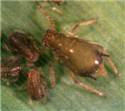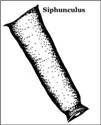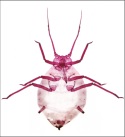Classification
Aphidinae: Aphidini
Diagnosis
Apterae on grasses and cereals, broadly oval, green mottled with yellowish green or olive-green, or dark-olive to greenish black; often with rust-coloured patches around the bases of siphunculi. These patches sometimes meet on the abdominal dorsum. The aphid has a very hairy appearance. Alatae have pale to dark-green abdomen.
Body 1.4-1.5 times as long as antennae. Processus terminalis more than three-four times the base of last antennal segment. Siphunculi more than 1.5 times as long as cauda, uniformly dark, but in black specimens, paler at the base. Patches around the bases of siphunculi are darker as compared to R. rufiabdominalis.
Distribution
Cosmopolitan. Found throughout India.
Host plant(s)
Poaceae: Oryza sativa L., Triticum aestivum L., Zea mays L., Scirpus sp.
Measurements
Aptera: Length of body 2.19, width 1.37; antennae 1.52, segments III: IV: V: VI 0.37: 0.16: 0.21: (0.09+0.46); u.r.s. 0.11; h.t.2 0.11; siphunculus 0.07; cauda 0.04.
Seasonal occurrence
November-December.
Natural enemies
Coleoptera: Coccinellidae: Aiolocaria hexaspilota (Hope), Cheilomenes sexmaculata (F.), Oenopia sauzeti Mulsant, Propylea japonica (Thunberg).
Hymenoptera: Braconidae: Aphidiinae: Aphidius colemani Viereck, Ephedrus nacheri Quilis, Praon abjectum (Haliday), Trioxys sinensis Mackauer.




